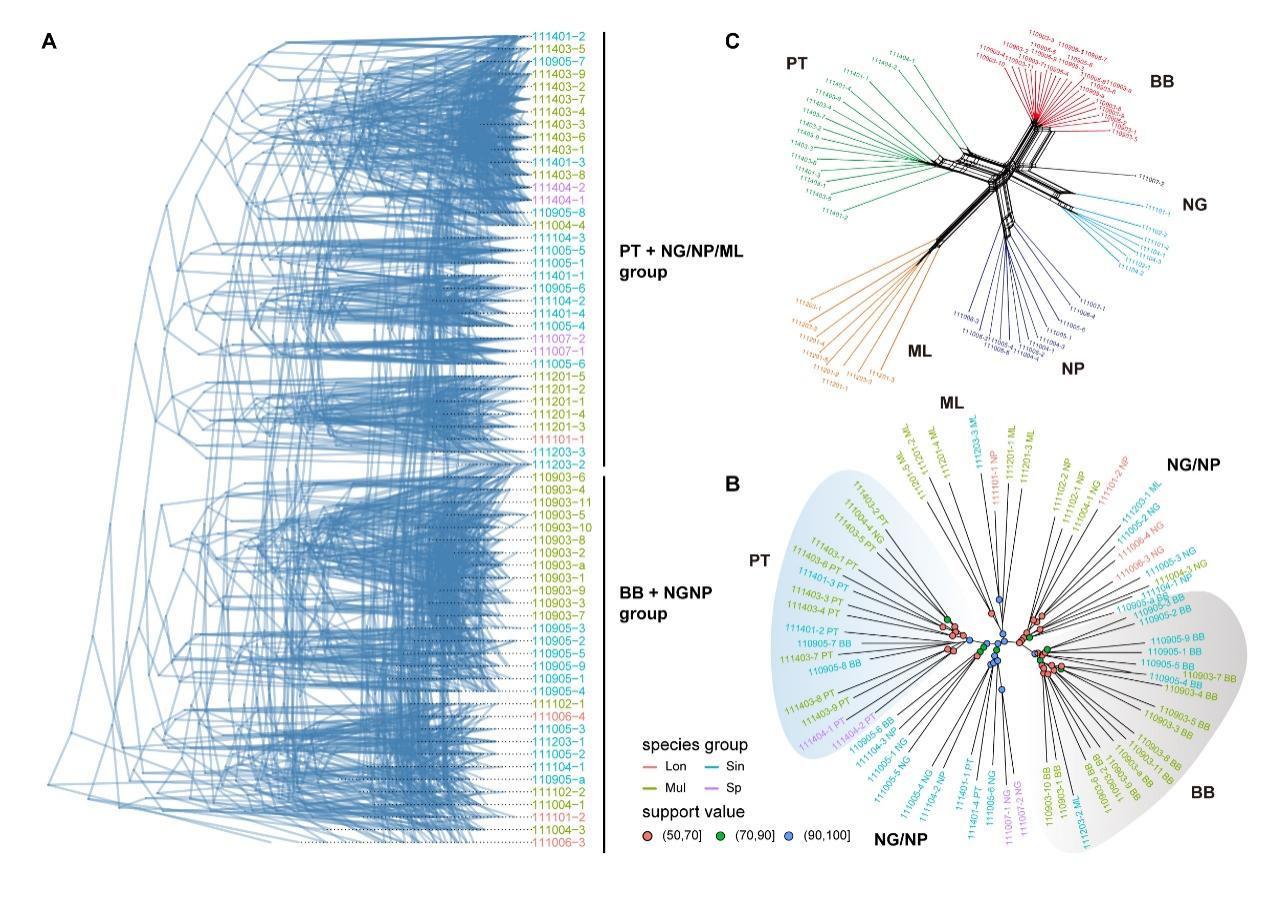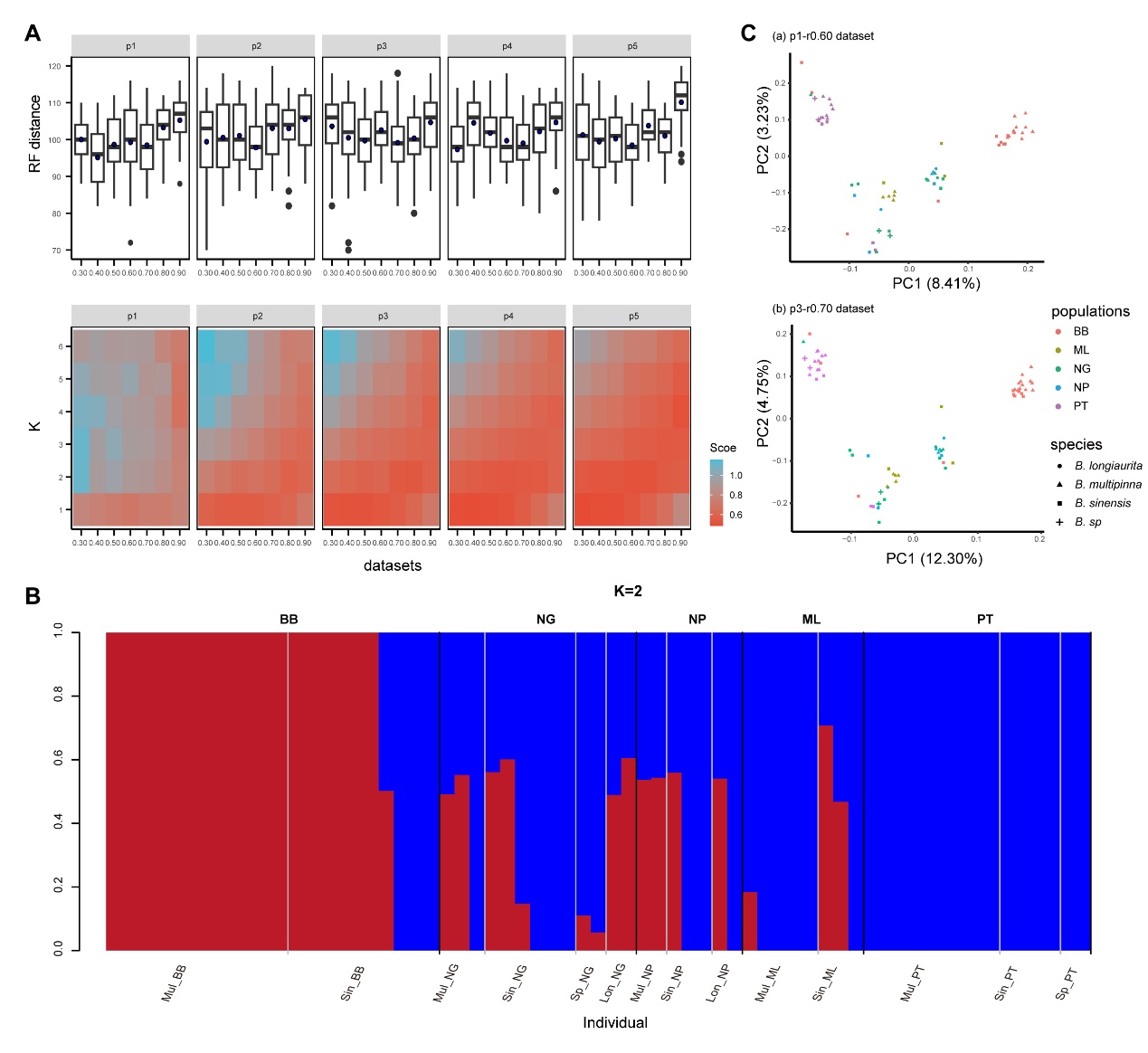Genomic Insights into the Bolbitis sinensis Species Complex Highlight the Need for Rethinking Traditional Morphological Delimitation
Recently, under the support of the National Natural Science Foundation of China and other programs, Researcher WANG Faguo and colleagues from the South China Botanical Garden, Chinese Academy of Sciences, conducted a comprehensive genomic study of the Bolbitis sinensis species complex. This complex comprises three previously recognized species—B. sinensis, B. × multipinna, and B. longiaurita—all of which occur primarily in Yunnan Province, China. Their findings provide novel insights into the genetic structure and evolutionary relationships within the complex, challenging traditional morphology-based classification. The results were published in the journal Plants.
Bolbitis is a genus of tropical ferns known for its morphological diversity and complex population structures, which have long posed challenges for species delimitation. The B. sinensis species complex, consisting of B. sinensis, B. × multipinna, and B. longiaurita, exhibits highly similar morphological traits. Despite their classification as separate species based on morphological characteristics, the subtle differences among them have led to ongoing debate over their taxonomic status.
By collecting 65 individuals from five populations—Bubeng (BB), Puwen (PT), Nangongshan (NG), Nanping (NP), and Menglun (ML)—and generating genomic data through Restriction-site Associated DNA sequencing (RAD-seq), the researchers reconstructed phylogenetic relationships, analyzed genetic structure, and assessed genetic diversity and differentiation among these populations. Their findings revealed that the three previously recognized species do not form clearly separate evolutionary lineages; rather, each population’s genetic composition is influenced by geographic distribution. The BB and PT populations are notably divergent, while the NG, NP, and ML populations exhibit a high level of gene flow and mixing. Further genetic diversity analyses highlight ML as harboring the greatest nucleotide diversity, whereas BB shows the lowest, illustrating how environmental factors and dispersal limitations can shape the genetic makeup of each population.
The study underscores that the morphological differences traditionally used to delimit B. sinensis, B. × multipinna, and B. longiaurita may not be sufficient for defining distinct species. Instead, these variations could stem from environmental influences or inter-population gene flow. By questioning the long-established reliance on morphological characteristics for taxonomic decisions, the work emphasizes the crucial role of genomic data in clarifying classification uncertainties among ferns. Although the research focused on only five populations in Yunnan, broader sampling across the entire distribution of the B. sinensis complex would likely yield a more comprehensive understanding of its evolutionary history and genetic diversity. Investigations into the mechanisms and patterns of gene flow may also illuminate the evolutionary processes that shape the genetic structure observed within this group. This study, published in Plants, marks a significant advancement in This knowledge of fern evolution and contributes to the growing body of evidence that advocates for integrating genomic methods in species delimitation.

Figure 1. Phylogenetic tree and network analysis of the B. sinensis species complex.(Image by WANG et al)

Figure 2.Estimated population structure of the B. sinensis species complex.(Image by WANG et al)
File Download: